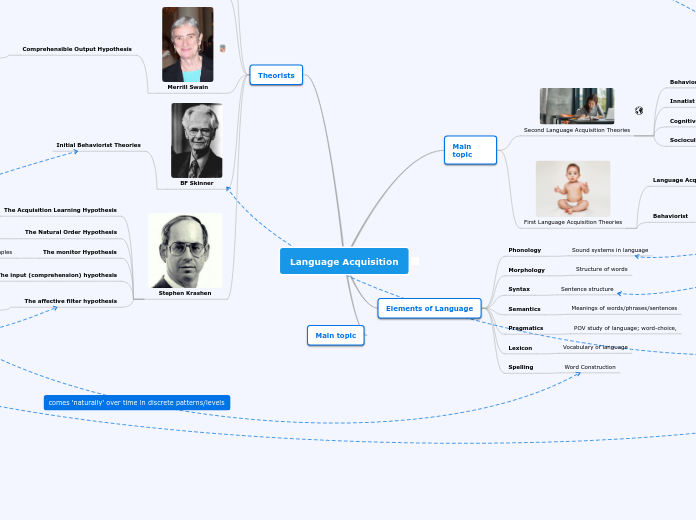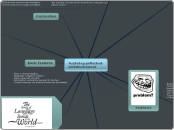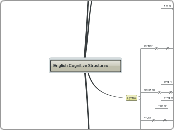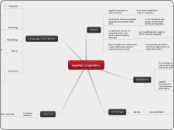Language Acquisition
Theorists
Stephen Krashen
The affective filter hypothesis
Even when comprehension is high, anxiety must be low for learning to occur
The input (comprehension) hypothesis
Understanding content is critical for learning, it doesn't matter the format
The monitor Hypothesis
Use examples of language to correct other examples
The Natural Order Hypothesis
Language is acquired in a consistent similar order
The Acquisition Learning Hypothesis
fundamental difference between learning and acquiring are different, acquiring is subconscious
BF Skinner
Initial Behaviorist Theories
Merrill Swain
Comprehensible Output Hypothesis
Learners grow from not only syntehsizing information, but also creating comprehensible output
Lev Vgotsky
Zone of Proximal Development
Knowledge is constructed in scaffolded partnership
Learning is Social
Naom Chomsky
Elements of Language
Spelling
Word Construction
Lexicon
Vocabulary of language
Pragmatics
POV study of language; word-choice,
Semantics
Meanings of words/phrases/sentences
Syntax
Sentence structure
Morphology
Structure of words
Phonology
Sound systems in language
Main topic
First Language Acquisition Theories
Behaviorist
First languages are learned through mimicry and supportive actions
Language Acquisition Device
Children are capable of more than mimicry thanks to a naturally existing framework to learn/synthesize language
Second Language Acquisition Theories
Sociocultural Perspective
Cognitive/Developmental Perspective
Subtopic
Innatist Perspective
Behaviorism









